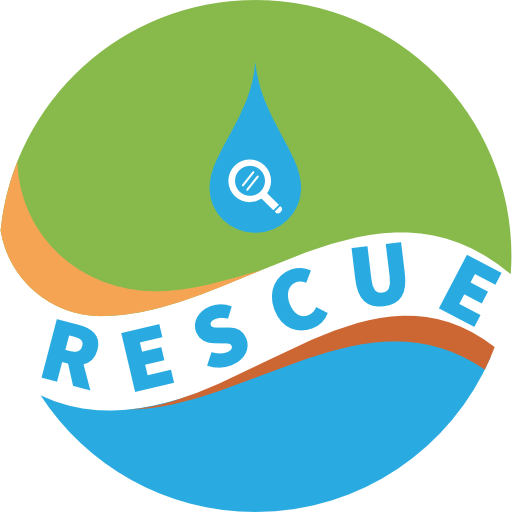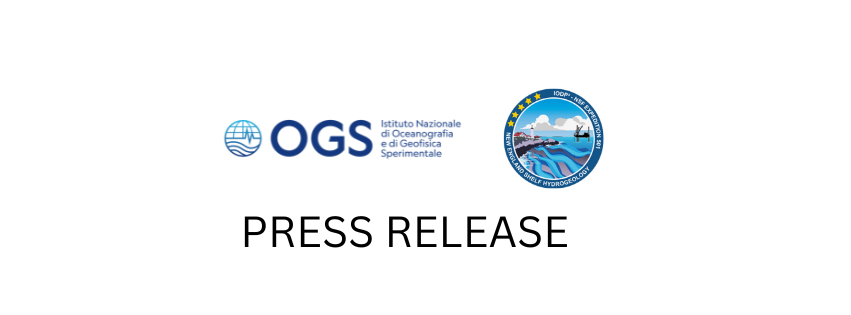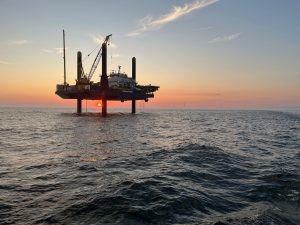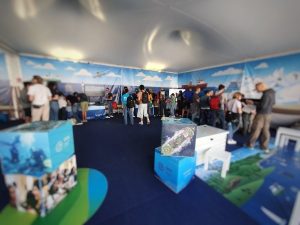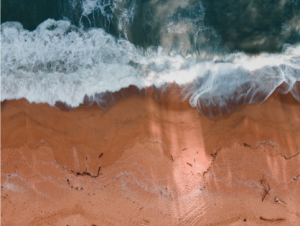P R E S S R E L E A S E: The National Institute of Oceanography and Applied Geophysics (OGS) participates in an expedition to study the ocean floor
The mission, which also includes RESCUE’s Cristina Corradin of OGS, involves 41 scholars from 13 different nations.
The expedition will study the presence of brackish water off the coast of New England.
TRIESTE, MAY 22, 2025 – 70% of the Earth is covered in water, but some of it also flows beneath the surface, including the ocean floor. In some coastal areas, in fact, terrestrial aquifers extend into the open sea, forming “offshore” aquifers that can contain fresh or brackish water. Their origin, distribution and functioning remain largely unknown.
To investigate this phenomenon, the “New England Shelf Hydrogeology – Expedition 501” is about to depart, the result of a collaboration between the International Ocean Drilling Programme (IODP³) and the National Science Foundation (NSF) of the United States. The international team will use the jackup rig Robert to drill into the ocean floor off the coast of Massachusetts, in the Atlantic Ocean, and take samples in up to three areas selected through preliminary geoscientific surveys.
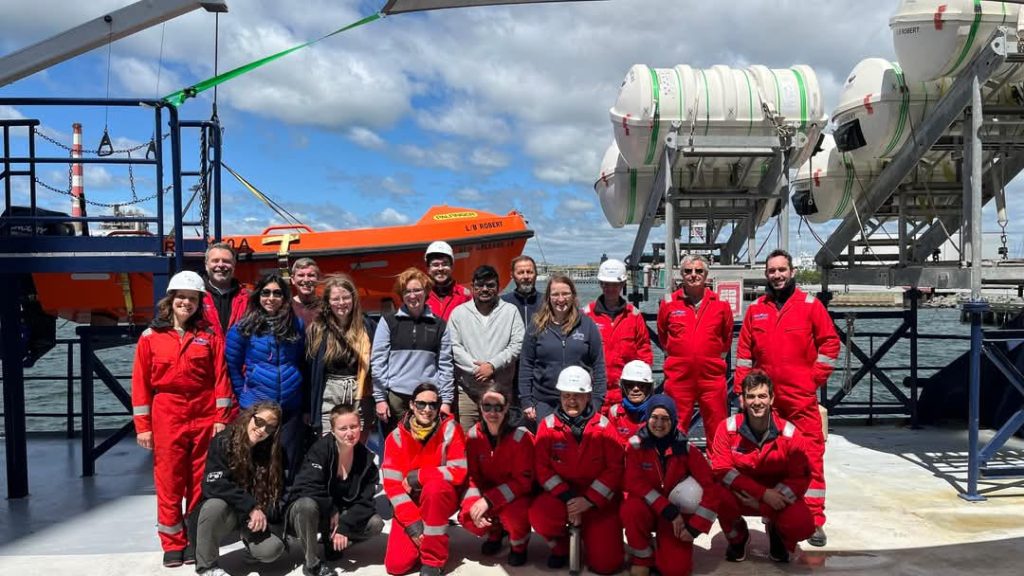
Image:
The science team of the first rotation aboard the vessel L/B Robert. The vessel will serve as a home for the science team until August.
Back in the 1960s, scientists were surprised to see evidence of fresh or brackish water beneath the ocean floor, but decades after these observations, the distribution and nature of these aquifers, and the quality of the water they contain, remain open questions to be answered by science.
The goal of Expedition 501 is to clarify the origin of fresh and brackish water in the seabed, confirming hypotheses about their accumulation during glacial periods or when sea levels were lower. According to some theories, the water could have accumulated in offshore aquifers at a time when sea levels were about 100 metres lower than today, or it could have formed under an ice sheet or a proglacial lake during a glacial period between about 450,000 and 20,000 years ago.
The data collected will be useful for better understanding the dynamics of underground aquifers, with implications for similar geological environments in other areas of the Earth.
The mission is led by Prof. Karen Johannesson (University of Massachusetts, Boston) and Prof. Brandon Dugan (Colorado School of Mines) as co-scientific leaders. OGS is also participating, with researcher Cristina Corradin, who will contribute to the data analysis on land, in Bremen (Germany), developing geostatistical and hydrogeological models to simulate the circulation of underground water.
The expedition set sail from the Port of Bridgeport on May 19, and for the first time, scientists on the IODP³-NSF 501 “New England Shelf Hydrogeology” expedition will have the opportunity to collect water and sediment samples from the ocean subsurface of the New England Shelf, reaching a maximum depth of 550 metres below the ocean floor. The collected materials will then be analysed by researchers from around the world and specialized in various scientific disciplines, through which it will be possible to understand the complex functioning of the local offshore aquifer system. “I am thrilled to be part of the shore-based Science Team of the IODP³ – New England Shelf Hydrogeology – Expedition 501, the first IODP expedition conceived with the specific objective of investigating a hydrogeological topic: offshore freshwater aquifers”, said Cristina Corradin, a researcher at OGS who is currently working on the RESCUE project, funded under the Water4All Partnership – Water Security for the Planet, and coordinated by the University of Trieste.
“The shore-based team will meet in Bremen, Germany, to analyse the data collected during the offshore phase of the mission, scheduled to depart in the second week of May 2025”, continues the researcher. “I will collaborate as a member of the OGS hydrogeology group, with the aim of initially developing a geostatistical model of sedimentary facies distribution and subsequently a hydrogeological model of the study area, based on new data, pre-existing data and pumping tests that will be conducted on board. These models will allow us to simulate the circulation of groundwater to evaluate the potential active recharge from the continent to the sea, the origin of these offshore freshwaters and the related mechanisms of emplacement and migration”.
——–
The expedition is led by the European Consortium for Ocean Research Drilling (ECORD) within the International Ocean Drilling Programme (IODP³), funded by IODP³ and the National Science Foundation (NSF).
IODP³ is an international publicly funded scientific research program and supported by 16 countries. It studies the history and dynamics of the Earth using sediments and rocks from the seabed, and monitors the subsurface of the ocean floor. Using multiple platforms – a unique feature of IODP³ – scientists examine the deep-sea biosphere and subsurface ocean environments, as well as environmental changes, natural hazards in the marine environment, processes and their consequences, and the cycles and dynamics of the solid Earth.
Research Expedition 501 is divided into two phases (offshore operations and onshore operations) and is led by a scientific team of 41 people from 13 different countries (Australia, China, France, Germany, India, Italy, Japan, the Netherlands, Portugal, Sweden, Switzerland, the United Kingdom and the United States). In particular, the offshore operations will take place between May and early August 2025. Then, in January 2026, the entire scientific team will reunite for the onshore operational phase, which will be held at the Bremen Core Repository at the MARUM – Centre for Marine Environmental Sciences of the University of Bremen, in Germany. Here, the sediment cores will be divided, sampled and analysed, and all the collected data will then be processed. The cores will be archived and made accessible to the entire scientific community for further research, after a one-year moratorium period, following the onshore phase of the expedition. All the data will finally be made available to the public and the results obtained will be published.
More information:
About the Expedition – https://www.ecord.org/expedition501/
Scientific Prospectus – https://iodp3.org/documents/expedition-501-scientific-prospectus/
About the International Research Collaboration – https://iodp3.org/about/
About the European Part of the Programme – https://www.ecord.org/ and Mission-Specific Platform Expeditions – https://www.ecord.org/expeditions/msp/concept/
Frequently Asked Questions: https://expedition501.wordpress.com/2025/02/19/faq1/Offshore
Contacts:
IODP³-NSF Expedition 501 Co-Chief Scientists:
Professor Brandon Dugan – Colorado School of Mines, Golden, USA Email: dugan@mines.edu
Professor Karen Johannesson – University of Massachusetts, Boston, USA Email: Karen.Johannesson@umb.edu
IODP³-NSF Expedition 501 Operations:
Dave McInroy – ESO Science Manager – British Geological Survey (UK) Email: dbm@bgs.ac.uk
ECORD Outreach: Ulrike Prange – ECORD Scientist – External and Media Relations; MARUM – Center for Marine Environmental Sciences at the University of Bremen (Germany) Email: uprange@marum.de Phone: +49 421 218-65540
Press Office Istituto Nazionale di Oceanografia e di Geofisica Sperimentale – OGS
Francesca Petrera – OGS: cell. 333.4917183 – email press@ogs.it
Marina D’Alessandro – OGS: cell. 349.2885935 – email press@ogs.it
Enrico Carraro – email press@ogs.it
Read the original press release in Italian here
